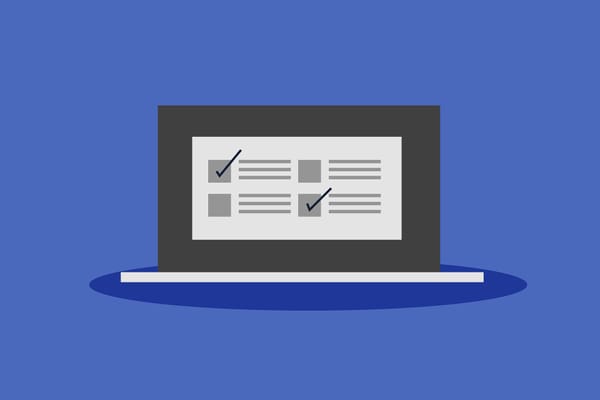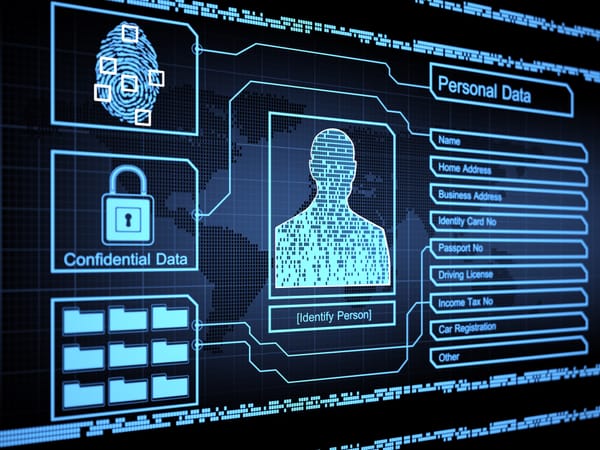How can you assess the level of threats to your privacy and prevent compromise of your digital identity and data

Anyone who goes online faces cybersecurity and privacy risks. The more aware you are of these risks and potential misuse of your identity and data, the more likely you’ll avoid threats that may damage your reputation or finances.
During your privacy and security journey, you face many difficult tasks, including correctly assessing your threat level – or being able to determine what factors can make you vulnerable online and how they can impact your privacy.
In a data-driven world, your digital identity matters more than you know, and it is often the most vulnerable to theft and misuse by hackers, scammers and other third parties.
Before we begin creating a privacy threat model, let’s remind ourselves of the type of data that can have the most damaging effects if it falls in the wrong hands:
• PII and other sensitive data that may include your full name, phone number, physical address, email addresses, passwords, IPs, Social Security Number, and driver’s license and passport numbers. A combination of this data can allow cybercriminals to conduct identity theft crimes
• Payment data relating to financial transactions such as credit and debit card numbers, bank account numbers and PINs that let malicious actors gain access to your financial accounts, transfer funds or make purchases in your name
• Health data or personal health information including medical history, health insurance data, hospital visits and prescriptions that can allow fraudsters to conduct medical identity theft among others
Creating your privacy/security threat level in five easy steps
To better assess your privacy and security needs and protect your identity, you must determine potential attack vectors and threats, the likelihood of attacks and the consequences of you becoming a victim.
1. Start by establishing the assets you want to protect
Your devices and online accounts hold valuable information, be it financial info, work-related data, important documents, family videos and other sensitive files. You should have a clear view of what type of data you want to protect and who has access to it, and take the necessary steps to prevent others from viewing it.
2. Try to identify potential threats or third parties that may want to get ahold of your devices and data
This may include hackers, a former partner, a data broker, a competitor, a stalker or other malicious individuals. Depending on your analysis, you can properly address any security issues
3. Determine the likelihood of threats targeting you
Most internet users don’t necessarily feel that at risk, falsely believing they may not become the target of scammers and cybercriminals. Get rid of the “it can’t happen to me attitude” and stop presuming that your accounts hold no exploitable information. If you are an active digital citizen, presume that your data will eventually be exposed online, and not necessarily because of you (data breaches and leaks from organizations and businesses).
4. What are the immediate and long-term consequences if your digital identity is compromised
Threat actors and third parties may gain access to your data via vulnerabilities, malicious attacks or accidental exposure. Once your data or assets are exposed, digital miscreants can commit fraud, impersonate you, and ruin your credit score or reputation.
5. What is your prevention plan and how can you mitigate potential consequences
While there may not be a bulletproof protocol that can fully safeguard your identity, finances and data, prioritizing your digital security and keeping up with the latest security and privacy tools can help you minimize your risks.
What you can do :
- Reduce the amount of information you share online and keep sensitive information secure.
- Be careful of where you click - Downloading files from unverified sources can expose you and your devices to security risks that can harm your privacy and finances.
- Improve your password security - Passwords are the first line of defense against account takeover attacks that may harm your finances or reputation. You can also add a password manager to help you manage your account credentials
- Keeping devices and software up to date makes your devices less vulnerable to attacks.
- Monitoring for data leaks can help you mitigate any potential threats.
- Implement a data breach response plan – With businesses and organizations under constant fire from cybercriminals, it has become crucial for consumers to respond quickly and mitigate potential fallout from data breaches.
- Use a security solution to prevent malicious attacks, phishing and fraud.
Worried about how much of your private information is on the internet and vulnerable to theft or misuse?
Bitdefender Digital Identity Protection lets you visualize your digital footprint, even from services you no longer use but that still have your data, and continuously monitors both the public web and the Dark Web for data breaches and leaks that put your personal data and identity at risk.
Our identity protection service allows you to take quick, decisive actions to stay safe, close up any leaks and weak points in your digital footprint and even sniff out social media impersonators who may ruin your reputation.
Read more about or security privacy and identity protection solutions here.
tags
Author
Alina is a history buff passionate about cybersecurity and anything sci-fi, advocating Bitdefender technologies and solutions. She spends most of her time between her two feline friends and traveling.
View all postsRight now Top posts
How to Protect Your WhatsApp from Hackers and Scammers – 8 Key Settings and Best Practices
April 03, 2025
Outpacing Cyberthreats: Bitdefender Together with Scuderia Ferrari HP in 2025
March 12, 2025
Streamjacking Scams On YouTube Leverage CS2 Pro Player Championships to Defraud Gamers
February 20, 2025
How to Identify and Protect Yourself from Gaming Laptop Scams
February 11, 2025
FOLLOW US ON SOCIAL MEDIA
You might also like
Bookmarks







